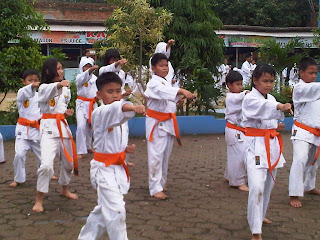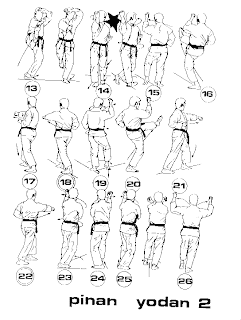

The Truth About Power Kick Strategies in Karate (By Al Case) Kicking is one of the most misunderstood weapons of today's martial arts. You are risk being off balance, are fighting at longer range, and yet must stick to certain basic strategies of combat. This bit of writing, however, should enable you to offset the disadvantages and develop an excellent method for combat, and even develop some pretty strong and powerful kicks. Interestingly, kicks were not always a big thing, they didn't even impact on the American martial arts until the sixties. Watch the kicks in movies earlier than that and you don't see much, not even in the old kung fu chop sockies. The reason for this lack of adequate kicking had to do with clothing and basic strategy. Soldiers in older times often wore armor in combat. This meant that they were carrying more weight, and their balances were often at risk if they wanted to deliver some sort of leg attack. Ask a modern day solder to kick while wearing body armor, a back pack, a rifle, while wearing combat boots, and you will easily see my point. Another reason was that soldiers carried swords. Why on earth would you attempt a leg attack, which is slower than punching, and larger and easier to see, to a fellow who was holding something long and sharp? Or, with today's modern warfare, a weapon that could shoot projectiles over distances? Thus, before Tae Kwon Do reared its head, with that art's spinning kicks and head hunters and ax kicks, martial arts foot techniques were quite a bit different. Instead of lifting the leg up and shooting it in, which could often be easily defended against, the leg was chambered with the foot cupping the standing knee, and then snapped out. In other words, a leg attack was actually more of a slap with the outside portion of the foot. A lot of power could be delivered with this kick, and one didn't have to risk being off balance, and it wasn't out long enough to be chopped with a sword. Actually, it was designed for close in work, not the long ranges appropriate to today's kicks. And, speaking of long range kicks, we now come face to face with the reasons for today's modern kicks. Long, spinning, jumping kicks came into their own with the Korean influence of the 60s. Long kicks took more energy, were great for conditioning, and were so different that, at least in the beginning, they worked. Now, however, while they are good for a change up, most people see the long kicks coming, and so they treat them as a part of strategy, and not the end all that defines combat. It is doubtful that we will ever go back to short range, slapping kicks at knee level. And, there is good reason for practicing the long, high kicks, for they give range, a type of strength, and are pretty darn good for shifting strategies in combat. And, the good news, one can, through proper dedication and diligence and heaps of sweat, develop powerful kicks in any art, be it Karate, Kung Fu, or whatever. Al Case began kicking 4O years ago in the Kang Duk Won. You can pick up a free ebook describing his methods at Monster Martial Arts. (Article Source: http://EzineArticles.com/?expert=Al_Case















